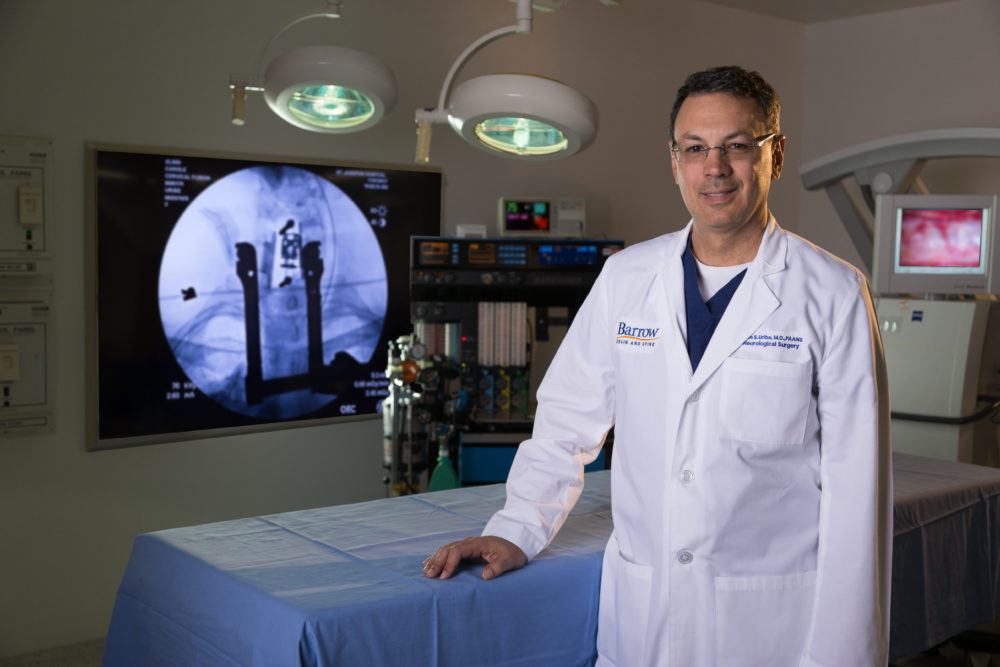
Barrow Takes High-Tech Approach to Reduce Radiation in Operating Room
It’s also a danger to surgeons and other medical personnel; one study found that spine and orthopedic surgeons can exceed their lifetime occupational radiation limit in the first decade of their careers.
In response to this occupational threat, Barrow Neurological Institute recently began using innovative technology that reduces exposure by 50 percent while preserving the integrity of X-ray imaging, which is critical to success in the operating room.

Chief, Spinal Disorders
“Exposure to radiation is harmful to patients, surgeons, and health care providers,” says Juan Uribe, MD, Professor of Neurosurgery, Chief Division of Spinal Disorders at Barrow. “The main advantage of this new technology is that the patient and surgeons still have the benefits of X-ray visualization with minimal radiation without compromising the quality of the images, thanks to the unique software that processes the images and keeps high quality.”
The new product is comprised of a proprietary software algorithm and hardware components. It enhances low-dose, low-radiation X-rays to have similar diagnostic capabilities as conventional full-dose X-rays. It also helps reduce the number of X-rays needed.
The technology is being used in Barrow’s Spine Program, whose surgeons have one of the largest bodies of collective experience with minimally invasive spine surgery in the nation. Dr. Uribe says the product may also be used by other specialists at Barrow, which is part of Dignity Health St. Joseph’s Hospital and Medical Center.
The innovation in the operating room comes as the use of fluoroscopy (or X-ray) is becoming increasingly common in surgical procedures, according to national studies.
The main advantage of this new technology is that the patient and surgeons still have the benefits of X-ray visualization with minimal radiation without compromising the quality of the images.
Dr. Juan Uribe, Chief, Spinal Disorders
A 2016 study in the Journal of Endourology found that over the past 20 years, the use of fluoroscopy had been “constantly growing” in urologic surgical procedures. “Thus, in their daily practice, urologists and other operating room staff are exposed to X-radiation increasingly frequently,” the study said. “This raises questions as to the risks they encounter and the actions needed to reduce them.”
Another study, published in 2006 in Spine, showed that spine and orthopedic surgeons can receive their lifetime occupational radiation limit within the first 10 years of their career. As a result, cancer rates and contraction of cataracts associated with radiation exposure are nearly double that of other surgery practices.
“Every health care provider is aware of the consequences of radiation exposure since early in their careers,” Dr. Uribe says. “This technology is an important step forward.”
By using the unique technology, Barrow reaffirms its commitment to innovation and safety. “This is a demonstration from Barrow Neurological Institute and Dignity Health investing in protecting patients and health care providers against the harmful ionizing radiation exposure from the X-rays,” Dr. Uribe says.
Click here for b-roll of the LessRay.
IN THE NEWS: Barrow Neurological Institute in Phoenix Takes High-Tech Approach to Reduce X-Ray Radiation Danger
